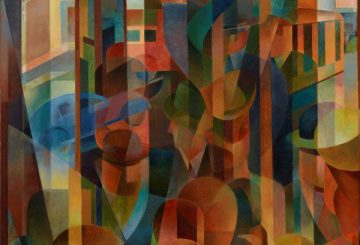I want to become an artist. Should I go to art school?
Going to art school may well extinguish any natural talent you already have, so it would be unwise to go into debt just to find out. However, not going to art school isn’t much of an option either since art school, like regular high schools and universities, are just as much about becoming socialized in the art world as they are about holding a brush or a camera. And you might be really nice looking and therefore be very popular in life drawing class. So go.
I am interested in the latest philosophical theories as they are applied to the visual arts. Would going to art school be a good idea for me?
Yes, but it depends on which art school you go to. Some are specifically designed for people with little interest in art history but lots of enthusiasm ideas and concepts. You wouldn’t be very happy at an educational institution that only taught the sharpening of pencils and considering your palette. Not only would you not learn about the latest philosophical theories, you wouldn’t be able to use your degree for very much besides teaching others how to sharpen their pencils. You’d be better off looking for an art school that does teach theory and its application in the visual arts and is a school attached to a university [so you can use that degree later on]. But before you go, ask yourself this question – would I be better off actually studying philosophy?
Will going to art school guarantee me success as an artist?
The chances of “making it” in the art world are extremely slim. In Australia there are more than 50 art schools producing on average 50 to 100 graduates each per year. But there are only 10 to 20 contemporary art galleries in Melbourne and Sydney with perhaps a dozen exhibiting artists each. The chances are therefore stacked against you. You might be one of the three or four graduates who luck into decent commercial representation straight out of art school, but it will probably take ten to 15 years to become self sufficient as an artist, by which time the numbers will have narrowed. Chances are you will no longer be an artist by then anyway, but don’t fret, you can always become an art dealer, a curator or arts writer.
I have recently graduated from art school and I’m looking for representation in a commercial gallery. Which one should I choose?
Whoa there buster – which one should you choose? The art dealer of your choice has to choose you, and it’s usually on their terms. The way to get commercial representation is to act coy by having shows in artist run galleries while pretending you have no real interest in the commercial game. Sending slides of your work and a CV attached to a politely worded covering letter is the same as saying “I’m desperate, take advantage of me.” The next step is to wait for the gallery owners to come knocking.
I have been waiting for commercial gallery dealers to come knocking at my door but so far no one has come around. Am I doing something wrong?
You may be playing the “I’m not interested” thing a little too well. You’ll need to let artists already with commercial representation at the gallery of your choice know you’d certainly be interested in talking, to see how things might develop, and that might generate some sparks with the dealer. Alternatively, you might have waited too long and are now considered to be part of the artist run world of middle aged could-have-beens. In which case, career alternatives now come into play.
I am represented by a commercial gallery and I sell my work once every eighteen months – is that all there is?
The realisation that commercial representation isn’t all it’s cracked up to be is dawning on you. If you’re asking yourself why your gallerist isn’t selling your works into important collections, why they haven’t sold a piece to a museum, why they won’t let you show your work in a group show in an artist run gallery, why they won’t let someone use your work on a book cover, why they haven’t actually paid you for the last show and why there are outstanding accounts from ten years ago, then maybe that dealer isn’t the right one for you after all.
I’m what you’d call a mid-career artist looking for a new gallery. Is it the same deal all over again?
Unfortunately it is.
I fear that my work is mediocre. Will buying the most expensive art supplies give me the edge I’m looking for?
Yes. People respect cotton duck or Belgian linen much more than the stretcher you bought from the Crazy Bargains Store.
My work has never been chosen for inclusion in a museum show. Why?
There are a number of possible answers. You may be making work that is far too unique to be in a museum show because most of those kinds of exhibitions are about finding work that fits into a common theme. Being too unique is a problem. On the other hand, your work may be too generic and lacks any identifiably original qualities that would mean your work was similar but not the same, whereas your work is similar and the same. You might try switching from Belgian linen to crappy canvases and see what happens.

